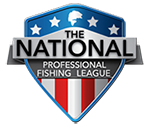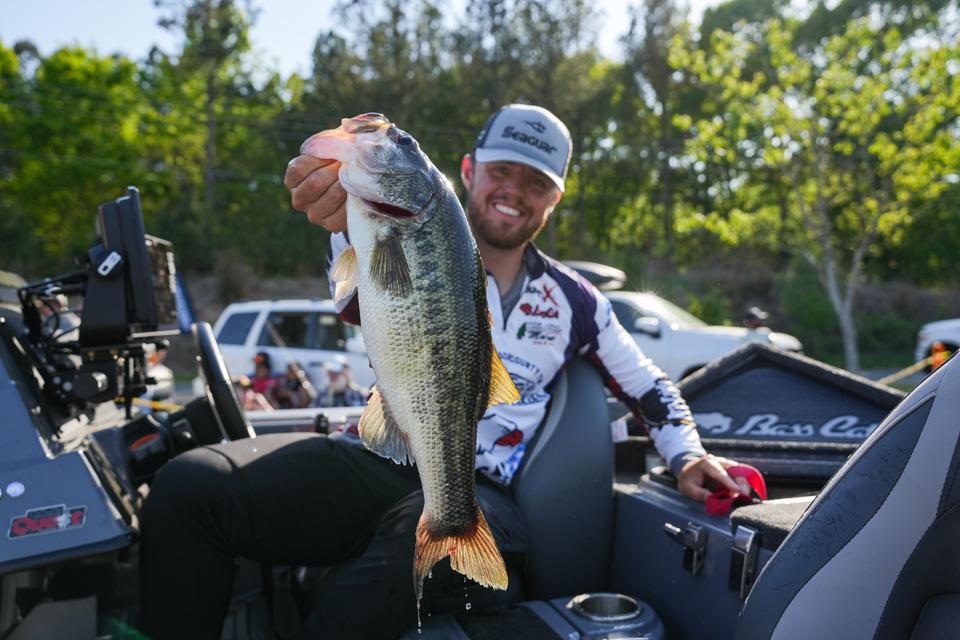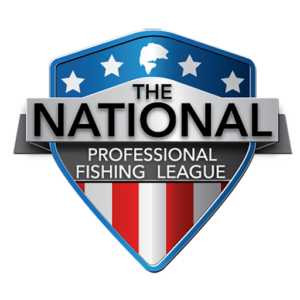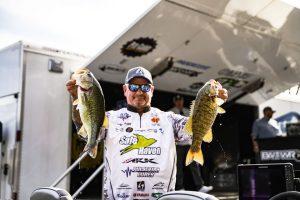Story by Hunter Sales | Photos by Tanner & Travis Lyons
Coming off a 16th place finish at Lake Norman for the Stop 2 of the 2025 NPFL season, today’s article covers one of the biggest decisions that I had to make during the event. Tournaments are won and lost by the game time decisions you make more often than the skills you possess. There is one decision that I wish I could re-make from Lake Norman, but ultimately, I was pleased with my decision-making. The biggest decision in front of me each day was this: Should I leave and fish new water or stay and hope more fish are pulling up?
Before I go into the specifics of my decision, I will talk about some guidelines that typically help me make the decision of when to stay or when to leave. The first part of this equation usually relates to knowing if you are ahead of or behind the fish. In the spring, it seems they are never staying still for more than a few days. I am always trying to figure out where they will be during the tournament in my practice days. I want to be on the front edge of a pattern rather than on the tail-end. My best tournaments have all seen the pattern develop throughout the event.
The second question: Is the weight ceiling in this area high enough to accomplish my goals in this tournament? Each tournament is different, and most anglers can tell you after practice if it is realistic for them to win the event or if they need to try to cut a check and run. Getting an idea of what weight-class fish are using your area can help make your decision of whether to stay or go.
The final part of the equation for me is typically simple: Do I think finding something better than my current area is worth the risk of not finding it? High risk, high reward is typically how I approach fishing tournaments but knowing when to roll the dice is key.
At Lake Norman, I was fishing the back of a creek that had a healthy population of resident largemouth. They were big and they were smart. I knew that if I could trick five of these largemouth into biting each day, I could make a run at winning the event. I managed to catch five largemouth the first day for just over 14 pounds and lost a fish to put me around the 16-pound mark. I had a long first day—not being due in until 5:00—and spent most of my time after lunch fishing other areas that I had found in practice. I never upgraded once I left my primary area, in part due to fishing pressure on these stretches from other competitors. I knew that it was unlikely for me to be able to count on these areas throughout the next two days.
On Day 2, I once again started in my primary area, but it didn’t seem like any new fish had pulled up. The fish that I was seeing were mostly spooky fish that I was unable to catch on the first day. The wind had really helped on Day 1 and the cold nights were keeping new fish from pushing shallow. Regardless, I knew this area held the biggest largemouth that I had found. Knowing my other areas from practice were unlikely to produce, I opted to slow down and catch just a few of these largemouth. By 12:00, I had managed to catch two largemouths and a keeper spot on a wacky worm. I only had two hours to fish, and the slick conditions had killed my moving-bait bite. I rationalized that maybe I could use a glide-bait to draw out deeper bed fish and even though they were unlikely to commit, I could target them with the wacky worm and finish my limit. This would also show me what fish remained in the area so that I could make my Day 3 plan.
My fourth keeper came according to plan at 12:45. He showed himself on a boat dock around 12:15 and I caught him on a wacky worm 30 minutes later. At 1:00, I caught a 14-inch spotted bass that I had seen flash on the glide bait around 12:35. More importantly, I had seen multiple largemouth over three pounds give up their location as the bait cruised by their dock posts. I wasn’t able to catch these fish on Day 2 and ended up weighing just over 11 pounds, but I knew where I was returning for Day 3.
Going into Day 3 I was very worried about being able to catch another limit in this area. The bite had slowed significantly since practice, but the conditions were favorable. I had another long day, and the high temperatures were in the mid-80s. The water I was fishing was some of the coldest on the lake, starting each day around 62 degrees. All the largemouth that I had caught were pre-spawn, so I knew that there was a chance they pulled up to spawn. My first bite on Day 3 was a near 5-pound largemouth, but I remained without a second keeper until around 10:00 when I caught another 3-pounder that I had seen the day before. At 12:00 I still had two fish and debated leaving the area. Ultimately, I decided that I was still ahead of the fish with favorable conditions for them to come to me. The area I was in had a super-high weight ceiling and I was unlikely to find anything better. Sure enough, as the day progressed and the temperature rose, I started seeing more and more fish flash on the glide. I caught a few of these fish on a wacky worm and then had keeper number five commit to the glide around 3:00.
It was mentally challenging to fish one area for the entire tournament, but I was happy to manage a limit, some good points, and a 16th place finish. The grass isn’t always greener, and sometimes it’s best to hunker down in an area and make the most out of the fish that you are around. Of course, it’s easy to say that after it works out for you.
Each event is different and a lot of times you just have to trust your gut.
Glide bait set-up
St. Croix Physyx 7-foot-3 medium-heavy fast
Seviin GS Series Reel (7.3:1 gear ratio)
Seaguar Tatsu 20-pound-test
Hunter Sales – Angler Profile
Instagram | Facebook | YouTube





